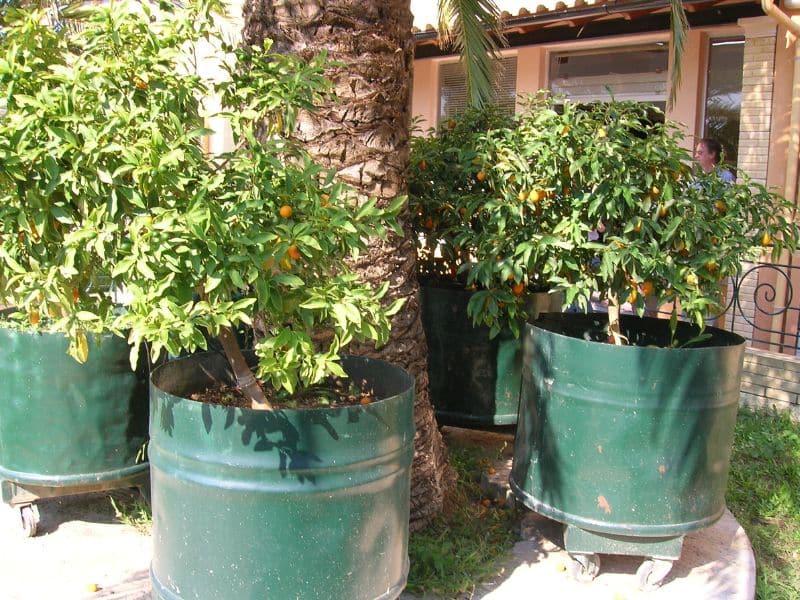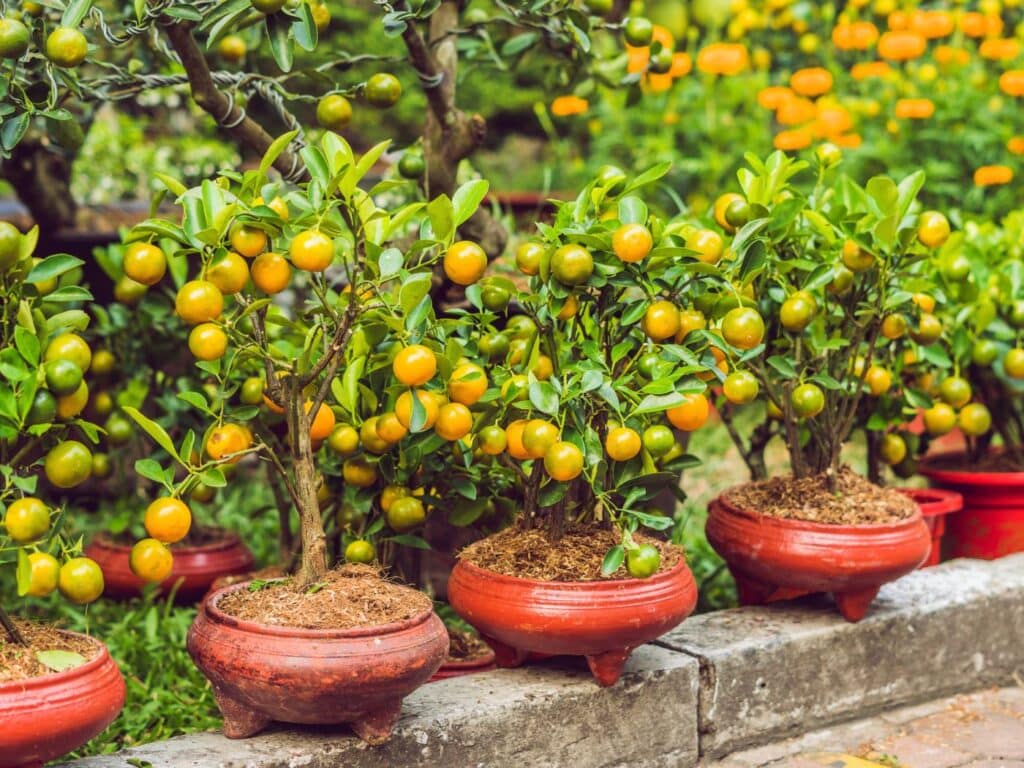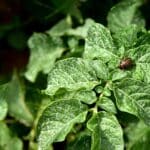Fruit trees are very popular among bonsai enthusiasts because they look attractive with beautiful fragrant blooms and edible fruits. Citrus bonsai are among the fruit trees with the most impressive fruits since the bright yellow colors can be captivating.
We highly recommend a kumquat if you want to grow your own orange tree. This popular type of bonsai produces tiny fruits that give the tree an attractive yet scaled miniature appearance.
Growing a kumquat bonsai isn’t too tricky, and even complete beginners have a success rate with this plant species.
If you plan on adding this vibrant specimen plant to your bonsai collection, you should stick around because we will show you how to grow and care for a kumuqat bonsai.
Plant Facts
| Scientific name | Citrus Japonica |
| Common names | Kumquat, round kumquat, marumi kumquat, morgani kumquat |
| Family | Rutaceae |
| Plant Type | Citrus fruit tree |
| Height and Width | 8 – 15 ft. tall (natural), 1–3 ft. wide (bonsai) |
| Origin | South-east China, Eastern Asia, and Japan |
| Flower colors | White flowers and golden-yellow to reddish-orange fruits |
| Foliage color | Dark green |
| Sun Exposure | Direct sunlight to partial shade |
| Soil Type & pH | Well-drained, loamy soil that is slightly acidic |
| Special features | Low Maintenance, Good for containers, produces interesting orange fruits, miniature tree |
What Does a Kumquat Bonsai Tree Look Like?
If you bonsai a regular orange tree, you will have a mini tree that produces massive fruits. This is different for the Kumquat fruit tree. This tree species naturally produces small oval-shaped oranges that can make the small tree look quite striking. It can also produce small white flowers and look beautiful throughout the year since it is an evergreen with dark green foliage and almost always either in flower or with fruits.
Where Can You Grow a Bonsai Kumquat
The kumquat is one of the hardiest citrus trees, but it requires lots of direct sunlight to bloom and produce fruits. The little tree should be kept in a bright and sunny position during summer. It can tolerate full sun but should be protected with a shade cloth if temperatures get too intense.
The little tree isn’t cold-tolerant and should be protected during the winter. It is best to bring it indoors when the temperatures drop below 50 degrees F. You can place it in a window with lots of direct sun exposure. If the sun cannot shine directly on the foliage, you must mimic UV exposure artificially with a grow light.

How to Grow a Kumkuat Bonsai
Kumquat trees have a moderate growth rate. They will only grow up to 61cm in natural environments throughout the year. The little tree is, however, pretty resilient and easy to care for. Let’s look at how to grow this type of orange bonsai tree.
Propagation
These bonsai fruit trees can be grown from seed, cuttings, or grafting on the root stem.
Growing from seed can be easy since the seeds can sprout within three weeks after planting. No special treatment is needed to grow the tree from seed. You can plant it in potting soil and keep the seeds moist and in a warm, indirect light position until they sprout.
Growing from cuttings is possible, but the success rate is low. You must start with a 10-inch healthy softwood branch to grow the tree from a cutting. The cutting should be soaked in rooting hormone water for five to six days to produce roots.
When roots form, you can transplant your cutting in a potting soil mixture so it can grow a healthy root system.
It is usually best to wait at least one year after propagation before you start with any bonsai techniques because the little plant will need time to grow and develop a healthy root system.
Soil
Kumquats don’t like soggy conditions or clay soil. They should be planted in a proper bonsai soil mix that drains well. The trees grow best in slightly acidic conditions but can survive in alkaline soil.
Pruning
Pruning is essential for maintaining the miniature size of the tree. These evergreens should never be completely defoliated. There should always be some foliage left behind after pruning.
The little tree must be trimmed and pinched throughout the growing season. New branches can be pinched back to keep them short and promote more branch development.
The little tree can be pruned into any bonsai style, but it usually looks best with an informal, straight, upright, or slanting style. It is, however, possible to use this little tree for any of the common bonsai styles.
The stems and trunk of the tree can easily be modified with some aluminum wire while they are still soft and green. Once the trunk hardens, it will be hard to shape the tree.
Repotting and Transplanting
Since the tree has a moderate growth rate, you only need to repot it once every 4 – 5 years or whenever the root system has filled out the pot.
Mid-summer is the best time to repot a kumquat tree. When you repot this tree, please place it in a bonsai pot with plenty of drainage holes. It is best to use a proper bonsai soil mixture that drains well and to prune about one-third of the entire root system before planting it in the bonsai pot.
How to Care for a Bonsai Kumquat
Kumquat bonsai trees are quite resilient and should grow well as long as their basic needs are met. Let’s take a look at how to care for this type of bonsai.
Water
This plant can develop root rot if overwatered but should only dry out partially. You can test when to add new water by sticking your finger into the soil. If the top inch is dry, you must water the tree. If there is still moisture, then you can hold off on watering.
Sunlight
The miniature tree will need plenty of direct sunlight, or it might not flower. It can be placed in a partial shade position in particularly hot regions. For indoor kumquat, the bonsai can be kept in an east or west-facing window where it will get plenty of early morning or late afternoon sun.
Temperature and Humidity
The tropical little tree likes plenty of direct sun but must be protected if it gets too hot outside. Even though the plant can handle lots of heat, it can scorch or dry out if it is too hot. This type of fruit bonsai tree doesn’t tolerate cold temperatures and needs to be brought indoors during the winter.
Fertilizer
You will need to fertilize the little tree regularly to ensure lots of healthy growth. Your kumquat bonsai will grow well if you add a bit of liquid fertilizer once a week. In winter, the fertilizing can be reduced to once a month.
Pest and Diseases
This type of citrus bonsai can be vulnerable to caterpillars, aphids, and spider mites. It is also very likely to develop root rot if the soil is too moist.
Common Varieties and Cultivars
There are four main kumquat species: the Marumi, Meiwa, Nagami, and Hong Kong Wild varieties. However, These main species have quite a few cultivars, and most species of kumquat can be beautiful bonsai.
Citrus Japonica is a popular variety since it produces round fruits while most other varieties tend to produce fruits with an elongated shape. Here is a quick look at some popular varieties among bonsai enthusiasts.
- Meiwa kumquat (Citrus crassifolia)
- Round kumquat (Citrus japonica)
- Oval kumquat (Citrus margarita)
- Fukushu kumquat (Citrus obovata)
- Malayan kumquat (Fortunella polyandra)
Conclusion
Growing a kumquat can be a lot of fun. This little tree can conform to many shapes and styles and is quite hardy and easy to care for. It will also reward your efforts richly with fragrant blossoms and vibrant fruits that you can enjoy.
We hope you enjoyed our guide, and we wish you all the best if you decide to grow this miniature tree.
Learn more about the bonsai tree meaning and symbolism of common varieties!
Up next:
- Growing and Caring for a Bonsai Banana Tree (Musa acuminate)
- Growing and Caring for a Bonsai Avocado Tree (Persea Americana)
Image by galitskaya/depositphotos







